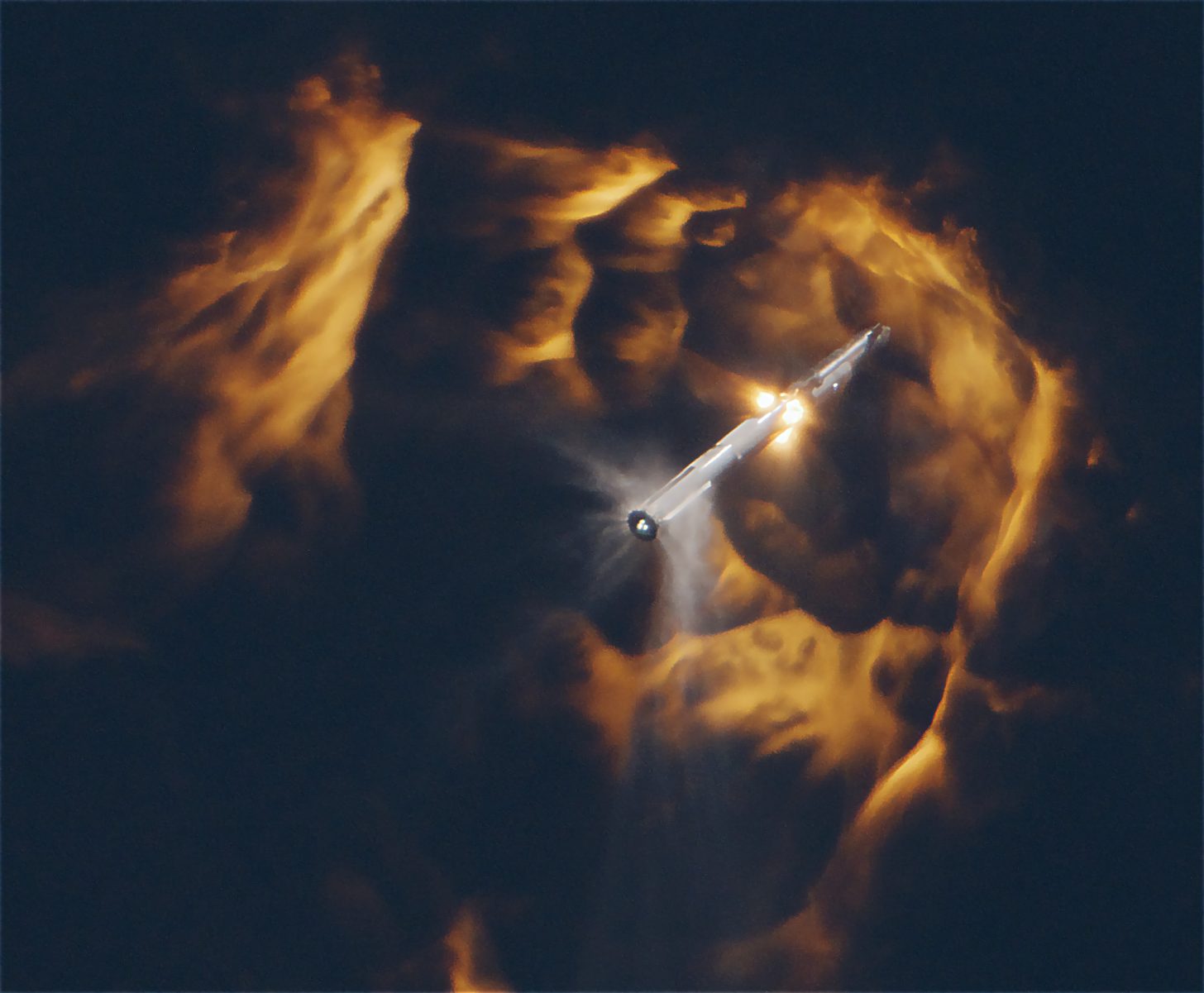
SpaceX's first Starship test flight in April carries the risk of significantly delaying the National Aeronautics and Space Administration's (NASA) Artemis program to develop a sustainable human presence on the Moon, according to a report from the Government Accountability Office (GAO). NASA's Artemis III flight is currently planned to take off in 2025, and the GAO's report shares that several portions of SpaceX's Human Landing System (HLS) development are taking longer than NASA programs typically do based on average historical data. Other key constraints identified for a 2025 launch include delays with the new spacesuits that Axiom Space is designing for lunar use.
미국 회계감사원(GAO)의 보고서에 따르면 지난 4월 SpaceX의 첫 번째 스타쉽 시험 비행은 달에서 지속 가능한 인간 존재를 개발하기 위한 미국 항공우주국(NASA)의 아르테미스 프로그램을 크게 지연시킬 위험이 있다고 밝혔습니다. NASA의 Artemis III 비행은 현재 2025년에 이륙할 예정이며, GAO의 보고서는 SpaceX의 인간 착륙 시스템(HLS) 개발의 여러 부분이 평균 역사적 데이터를 기반으로 NASA 프로그램이 일반적으로 수행하는 것보다 더 오래 걸린다고 공유합니다. 2025년 발사에 대해 확인된 다른 주요 제약 사항에는 Axiom Space가 달 사용을 위해 설계하고 있는 새로운 우주복의 지연이 포함됩니다.
In-Space Propellant Transfer Remains Key Hurdle To Successful Starship Demonstration Says GAO Report
SpaceX's mission architecture for its Starship HLS lunar lander involves launching a fuel depot to space and then filling it up. Once the depot is full, the HLS lander will dock with it to fill up and then start its journey to the Moon. According to the GAO, demonstrating in-space propellant transfer requires successfully launching Starship into orbit. SpaceX's April Starship test flight ended up delaying key demonstrations. to make them uncomfortably close to a 2025 Artemis III launch.
The report outlines that for its April Starship test, SpaceX had planned to successfully demonstrate Starship ascent, flight of the second stage stacked on the first stage and stage separation. However, company officials informed the agency that a fire inside the rocket caused its autonomous flight termination system to destroy the rocket and prematurely end the test.
보고서에는 SpaceX가 4월 우주선 테스트에서 우주선 상승, 1단계에 쌓인 2단계 비행 및 단계 분리를 성공적으로 시연할 계획이었다고 설명되어 있습니다. 그러나 회사 관계자는 로켓 내부의 화재로 인해 자율 비행 종료 시스템이 로켓을 파괴하고 시험을 조기에 종료했다고 기관에 알렸습니다.
SpaceX and NASA have delayed multiple "key events" for the HLS program to 2024, says the GAO, with eight out of 13 key events delayed by six to 13 months. SpaceX has to complete eight key events between November 2023 and the Artemis III flight, and this assessment was made before this month's orbital test flight that demonstrated stage separation and second-stage Starship engine ignition.
The delays might also have safety implications for the HLS program as they will squeeze the timeline that NASA has to work with to ensure that Starship meets human spaceflight requirements, states the GAO. According to NASA and HLS officials, SpaceX has to demonstrate that Starship can make it to orbit before it can progress to other milestones, such as a pre-Artemis III uncrewed test and in-space propellant transfer.
GAO는 스타쉽이 인간의 우주 비행 요구 사항을 충족하는지 확인하기 위해 NASA가 협력해야 하는 일정을 단축하기 때문에 지연으로 인해 HLS 프로그램의 안전에 영향을 미칠 수도 있다고 밝혔습니다. NASA와 HLS 관계자에 따르면 SpaceX는 Artemis III 이전의 무인 테스트 및 우주 내 추진제 이동과 같은 다른 이정표를 진행하기 전에 Starship이 궤도에 진입할 수 있음을 입증해야 합니다.
However, HLS officials were confident that a successful test flight would accelerate SpaceX's design process, enabling the firm to lock in Starship's design. After the April test flight, NASA officials were uncertain whether Starship could meet the Artemis III December 2025 deadline, with the HLS program schedule requiring adjustments post-April.
The primary technical work areas that might cause a delay include the Raptor engine and the fuel depot. Operating the Raptor at certain performance levels is key for the engine's certification, and should it remain uncertified, then an alternative engine system cannot be developed in time. Talking to the GAO, SpaceX's representatives shared that they were able to collect valuable data for tanking and other operations after the April test. They added that SpaceX has assembled and tested hundreds of engines as part of an iterative design approach.
지연을 일으킬 수 있는 주요 기술 작업 영역에는 Raptor 엔진과 연료 저장소가 포함됩니다. Raptor를 특정 성능 수준으로 작동하는 것은 엔진 인증의 핵심이며, 인증되지 않은 상태로 남아 있으면 대체 엔진 시스템을 적시에 개발할 수 없습니다. SpaceX의 대표자는 GAO와 대화하면서 4월 테스트 이후 탱크 및 기타 작업에 대한 귀중한 데이터를 수집할 수 있었다고 공유했습니다. 그들은 SpaceX가 반복 설계 접근 방식의 일환으로 수백 개의 엔진을 조립하고 테스트했다고 덧붙였습니다.
For the on-orbit fuel storage system, the report outlines that program documentation shares that SpaceX has made little progress in maturing these technologies. Key systems that SpaceX has to develop include
궤도상 연료 저장 시스템의 경우, 보고서는 SpaceX가 이러한 기술을 성숙시키는 데 거의 진전을 이루지 못했다는 프로그램 문서를 공유하고 있다고 설명합니다. SpaceX가 개발해야 하는 주요 시스템은 다음과 같습니다.
According to the GAO, some of the systems that SpaceX has to develop are:
GAO에 따르면 SpaceX가 개발해야 하는 일부 시스템은 다음과 같습니다.
Those systems include docking sensors and mechanisms (to identify, locate, and then physically align the HLS Starship and the tanker Starship for fluid transfer); propellant measurement (to gauge the amount of propellant in the tanks and how much was transferred); and storage capability to mitigate fuel loss in space.
이러한 시스템에는 도킹 센서 및 메커니즘(유체 이동을 위해 HLS 우주선과 유조선 우주선을 식별하고 위치를 지정한 후 물리적으로 정렬하기 위한)이 포함됩니다. 추진제 측정(탱크 내 추진제의 양과 이동된 양을 측정하기 위해) 우주에서의 연료 손실을 완화하기 위한 저장 능력.
The report was written before SpaceX's November Starship test, which saw successful stage separation and engine ignition. Since then, footage from the facilities in Texas shows significant activity as SpaceX prepares Starship for its next test flight.
이 보고서는 SpaceX의 11월 Starship 테스트 전에 작성되었으며, 성공적인 단계 분리 및 엔진 점화를 확인했습니다. 그 이후로 텍사스 시설의 영상은 SpaceX가 다음 시험 비행을 위해 Starship을 준비하는 동안 상당한 활동을 보여줍니다.


 Optimisus
Optimisus Optimisus
Optimisus Optimisus
Optimisus Thecryptoupdates
Thecryptoupdates DogeHome
DogeHome The Crypto Times
The Crypto Times Coincu
Coincu Optimisus
Optimisus Coin_Gabbar
Coin_Gabbar






















